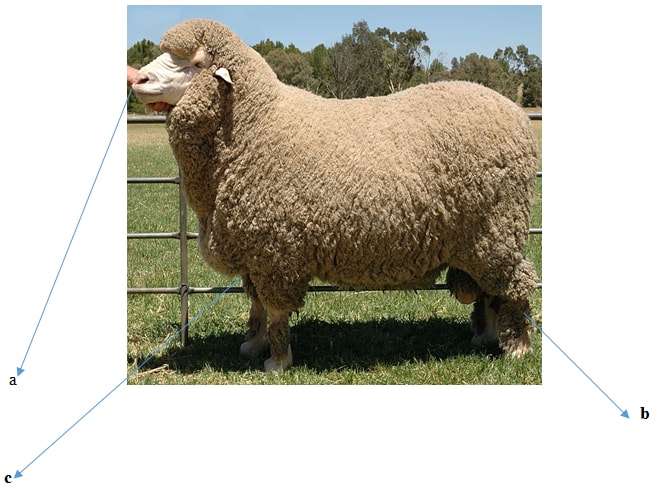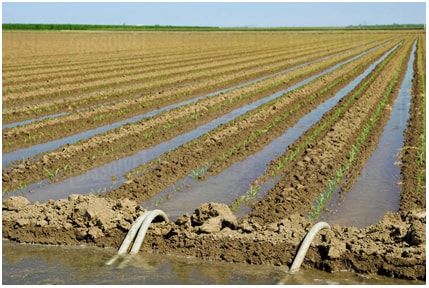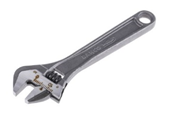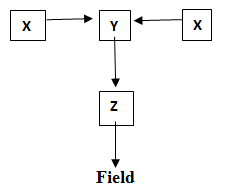QUESTIONS
SECTION A (30Marks)
- State four factors that influence soil formation. (2Mrks)
- Name four aspects of rainfall a farmer will consider in crop production. (2Mrks)
- Define the following terms (1 ½ Mrks)
- Pomology
- Soil profile
- Minimum Tillage
- State the disadvantages of shifting cultivation. (2Mrks)
- State three ways in which soil PH influence plant growth and production (1 ½ Mrks)
- State four characteristics of Topsoil (Horizon A) (2Mrks)
- Differentiate between the following terms (2Mrks)
- Drenching gun and bolus gun.
- Rolling and sub soiling.
- List four methods of land clearing. (2Mrks)
- Name four types of water pumps. (2Mrks)
- State four importance of drainage. (2Mrks)
- State three conditions under which irrigation should be practiced (1 ½ Mrks)
- State three characteristics of a well rotten manure. (1 ½ Mrks)
- Name four types of beef cattle breeds (2Mrks)
- State the meaning of the following terms (2Mrks)
- Billy
- Buck
- Capon
- Boar
- Differentiate between Bactrian and Dromedary. (1Mrk)
- Name two types of labor records (1Mrk)
- Name two examples of metal pipes commonly used on the farm (1Mrk)
- Differentiate between pumping and piping (1Mrk)
SECTION B (20 Marks) ANSWER ALL QUESTIONS
-
a
b
c- Name the above tools. (3mrks)
a –
b –
C – - State the functional difference between tool a and b. (1mrk)
- Name the above tools. (3mrks)
-

- Name the sheep breed above (½ mrks)
- Name the following parts labelled (1 ½ mrks)
A.
B.
C. - State three characteristics of the above breed (3mrks)
- Identify the method used in preparation of organic manure
- State the purpose of the following in organic manure preparation. (3mrks)
- Manure –
- Ash –
- Top soil –
- For how long does it take for the organic manure to be turned? (1mrk)
-
- Name the type of irrigation below. (1mrk)

- State three factors to consider when choosing the above method of irrigation.(3mrks)
- Give two advantages of the above type of irrigation. (2mrks)
- Name the type of irrigation below. (1mrk)
SECTION C (40 Marks) ANSWER ANY TWO QUESTIONS
-
- Name four methods of farming (2mrks)
- State five characteristics of small scale farming (5mrks)
- Explain five reasons why agriculture is referred as a science (5mrks)
- Discuss four harmful Biotic factors that affect agricultural production (10mrks)
-
- Explain five ways of maintaining soil fertility. (10mrks)
- Describe five characteristics of a fertile soil that influence crop productivity (10mrks)
-
- Discuss the process of water treatment by chemical method (12mrks)
- Describe four methods of drainage (8Mrks)
MARKING SCHEME
SECTION A (30Marks)
- State four factors that influence soil formation. (2Mrks)
- Climate
- Parent rock material
- Topography
- Time
- Living organisms
- Name four aspects of rainfall. (2Mrks)
- Rainfall reliability.
- Amount of rainfall.
- Rainfall distribution.
- Rainfall intensity.
- Define the following terms (1 ½ Mrks)
- Pomology
- This is the growing of fruits such as avocado, mangoes and citrus.
- Soil profile
- This is the vertical arrangement of various soil layers or horizons
- Minimum Tillage
- This is the application of a combination of farming practices aimed at least disturbance of the soil.
- Pomology
- State the disadvantages of shifting cultivation. (2Mrks)
- The total yield per unit area is low
- A lot of time is wasted
- Farmers have no incentive to develop land and conserve water and soil.
- Not applicable in high populated areas.
- State three ways in which soil PH influence plant growth and production (1 ½ Mrks)
- It affects availability of various nutrients i.e. low PH makes phosphorous and molybelenum less available.
- Very acidic or alkaline conditions affect activities of micro – organisms
- Different crop species react to PH in different manner i.e. coffee does well in PH 5.3 to 6.0
- State four characteristics of Topsoil (Horizon A) (2Mrks)
- It is darker than the other layers due to high content of humus.
- It is well aerated.
- Contains active living organisms which play the role of decomposition.
- It is well drained and contains most of the plant nutrients.
- Differentiate between the following terms (2Mrks)
- Drenching gun and bolus gun.
- Drenching gun is used to administer liquid drugs through the mouth of an animal while a bolus gun is used for shooting solid drugs through the mouth of an animal.
- Rolling and sub soiling.
- Rolling is the practice of compacting the soil which is loose or fine whereas sub soiling is the process of cultivating the soil for the purpose of breaking up the hard pans.
NB//: Mark as a whole.
- Rolling is the practice of compacting the soil which is loose or fine whereas sub soiling is the process of cultivating the soil for the purpose of breaking up the hard pans.
- Drenching gun and bolus gun.
- List four methods of land cleaning. (2Mrks)
- Tree feeling.
- Slashing.
- Burning.
- Use of herbicides.
- Name four types of water pumps. (2Mrks)
- Centrifugal/Rotardynamic pumps.
- Piston/Reciprocating pumps.
- Semi – Rotary pumps.
- Hydram.
- State four importance of drainage. (2Mrks)
- To reduce soil erosion.
- To remove toxic substances.
- To increase microbial activities.
- To increase soil volume.
- To raise soil temperature.
NB// any four of the above answers.
- State three conditions under which irrigation should be practiced (1 ½ Mrks)
- In dry areas.
- During dry periods.
- In the growing of paddy rice.
- State three characteristics of a well rotten manure. (1 ½ Mrks)
- Should be dark in color.
- Should be light in weight.
- Should smell like forest soil.
- Name four types of beef cattle breeds (2Mrks)
- Aberden Angus.
- Galloway.
- Hereford.
- Beef short horns.
- Charolais.
- State the meaning of the following terms (2Mrks)
- Billy
- Mature male goat
- Buck
- A mature male rabbit
- Capon
- A male Bird which has been rendered sterile.
- Boar
- A mature male pig
- Billy
- Differentiate between Bactrian and Dromedary. (1Mrk)
- Bactrian has two humps while dromedary has a single hump.
- Bactrian has more fur while dromedary is covered with less fur.
- Name two types of labor records (1Mrk)
- Muster roll.
- Labor utilization analysis.
- Name two examples of metal pipes commonly used on the farm (1Mrk)
- Galvanised iron.
- Aluminium pipes
- Differentiate between pumping and piping (1Mrk)
- Pumping is the lifting of water from one point to another by the use of mechanical force while piping is where water is moved through pipes.
SECTION B (20 MRK)
-
- Name the above tools. (3mrks)
a - Adjustable spanner.
b - Open – ended spanner.
c - Ring spanner. - State the functional difference between tool a and b. (1mrk)
‘a’ can be adjusted to open different sizes of nuts and bolts while ‘b’ is used to open specific sizes of nuts and bolts.
- Name the above tools. (3mrks)
-
- Name sheep breed above (½ mrks)
- merino sheep
- Name the following parts (1 ½ mrks)
- a - muzzle
- b - Hind leg
- c - Brisket
- State three characteristics of the above breed (3mrks)
- They are small in body and angular in form
- They have a drooping rump.
- They are narrow chest.
- Their muzzle is flesh colored.
- Their wool, hooves and horns are white, have a lambing percentage of 100
NB//Any relevant 3 points
- Name sheep breed above (½ mrks)
-
- Identify the diagram above. (1mrk)
Four heap system / stack method - State the purpose of the following in organic manure preparation. (3mrks)
- Manure - To provide food to the micro-organisms.
- Ash – To improve the level of potassium and phosphorous in the resulting manure.
- Top soil – To introduce micro-organisms that help in decomposition.
- For how long does it take for manure to be turned? (1mrk)
3 - 4 weeks.
- Identify the diagram above. (1mrk)
-
- Name the type of irrigation below (1mrk)
Furrow irrigation - State three factors to consider when choosing the above method of irrigation.(3mrks)T
- Topography – The land must be fairly leveled.
- Amount of water – There must be a lot of water available for this type of irrigation.
- Soil type – Soil must be able to hold a lot of water and allow it to stand for long periods, as it seeps into the soil for use by the roots.
- Give two advantages of the above type of irrigation. (2mrks)
- Reduces fungal diseases such as blight.
- Cheap to establish.
- Requires little skill compared to overhead irrigation.
- Reduces chances of soil erosion
- Name the type of irrigation below (1mrk)
SECTION C (40 Marks)
-
- Name four methods of farming (2mrks)
- Mixed farming
- Nomadic pastoralism.
- Shifting cultivation.
- Organic farming.
- Agro forestry
- ranching
- State five characteristics of small scale farming (5mrks)
- Small tracts of land.
- Use of improved technology.
- Production of crops and livestock is spread throughout the year.
- Goods are produced for subsistence or commercial purpose i.e. sale of surplus goods.
- Does not require heavy capital investment.
- Explain five reasons why agriculture is referred as science (5mrks)
- Crop pathology – The study of crop diseases.
- Entomology – The study of insects and their control.
- Agricultural engineering for. Example, soil and water conservation and farm machinery.
- Soil science – The study of soils.
- Genetics are applied in plant and animal breeding.
- Discuss four harmful Biotic factors that affect agricultural production (8mrks)
- Pests – Feed on crops thereby lowering quantity of agricultural produce.
Act as diseases vectors. - Parasites – Irritate livestock.
Causes anemia in livestock. - Predators – Eagles can eat chicken, rabbits among other livestock.
- Pathogens – Causes diseases in livestock and crops thereby lowering quantity of produce.
Increase cost of production when control measures are implemented.
- Pests – Feed on crops thereby lowering quantity of agricultural produce.
- Name four methods of farming (2mrks)
-
- Explain five ways of maintaining soil fertility. (10mrks)
- Crop rotation – This helps to control accumulation of crop pest and diseases on the farm.
- -Also helps to ensure maximum utilization of nutrients.
- Use of inorganic fertilizers – Help to add nutrients to the soil e.g. CAN, DAP, Urea etc
- Use of organic manure – Helps to supply organic matter to the soil.
- Minimum tillage: Which helps to maintain soil structure and prevent soil erosion.
- Intercropping (mixed cropping) – Leguminous crops fix nutrients and improve fertility.
- Proper drainage – Enhanced through breaking of hard pans or creation of water channels, this ensures proper aeration.
- Control of PH – Should be done almost to neutral to ensure proper functioning of microorganisms which help in decomposition of organic matter.
- Crop rotation – This helps to control accumulation of crop pest and diseases on the farm.
- Describe five characteristics of a fertile soil that influence soil productivity (10mrks)
- Good depth – Deep soil gives plants greater volume to obtain nutrients and also provide anchorage.
- Good water holding capacity – This ensures that water is retained well for plant use.
- Proper drainage – Well drained soils are well aerated facilitating healthy root development.
- Correct soil PH – Different crops have different nutrient requirement.
- Adequate nutrient supply – It should supply the crops with the nutrients they require in adequate amounts.
- Free from excessive infestation of soil borne pests and diseases.
- Should be free from weeds to reduce competition.
- Explain five ways of maintaining soil fertility. (10mrks)
-
- Discuss the process of water treatment by chemical method (12mrks)
Stage 1: Filtration of water at the intake;
Water from Source River is made to pass through a series of sieves.
Large particles of impurities are trapped by the sieves.
Stage 2: Softening of the water.
Water circulates in the mixing chamber and doses of soda ash is added to soften the water.
Stage 3: Coagulation and sedimentation.
Water is passed through coagulation tank where fresh air enters to remove bad smell / chloride of lime used.
Water stays for 36 hours thus solid particles settle and bilharzias causing organisms killed.
Alum is added to coagulate solid particles which settle at the bottom.
Stage 4: Filtration.
Water is passed through filtration with layers of sand and gravel to filter it .Water leaving the filtration tank is clean.
Stage 5: Chlorination
Water is passed through chlorination tank where chlorine is added.
Micro-organisms in the water are killed by chlorine.
Stage 6: Storage:
The treated water is stored in overhead tanks before distribution and use. - Describe methods of drainage (10mrks)
- Use of open ditches/channels/furrows.
Ditches are dug for water to flow by gravity lowering the water table. - Use of underground pipes.
Perforated pipes are laid underground and water seeps into them, then flows to a water way. - French drains
Ditches are dug and filled with stones and gravel and then covered with soil.
Water from the surrounding areas seeps into them then flows into a water way. - Cambered beds.
Raised beds are constructed in combination with ditches in the poorly drained soils such as the black cotton soil. - Mechanically pumping
In the low lying areas where the other methods of drainage cannot be practiced, water is mechanically pumped out of the soil. - Planting of trees
Trees such as eucalyptus can be planted in water logged areas as they lose a lot of water through transpiration.
- Use of open ditches/channels/furrows.
- Discuss the process of water treatment by chemical method (12mrks)
AGRICULTURE
SECTION A (30Marks)1. State four factors that influence soil formation. (2Mrks)• Climate• Parent rock material• Topography• Time• Living organisms2. Name four aspects of rainfall. (2Mrks)• Rainfall reliability.• Amount of rainfall.• Rainfall distribution.• Rainfall intensity.
3. Define the following terms (1 ½ Mrks)i. PomologyThis is the growing of fruits such as avocado, mangoes and citrus.ii. Soil profileThis is the vertical arrangement of various soil layers or horizonsiii. Minimum TillageThis is the application of a combination of farming practices aimed at least disturbance of the soil.4. State the disadvantages of shifting cultivation. (2Mrks)• The total yield per unit area is low• A lot of time is wasted• Farmers have no incentive to develop land and conserve water and soil.• Not applicable in high populated areas.5. State three ways in which soil PH influence plant growth and production (1 ½ Mrks)• It affects availability of various nutrients i.e. low PH makes phosphorous and molybelenum less available.• Very acidic or alkaline conditions affect activities of micro – organisms• Different crop species react to PH in different manner i.e. coffee does well in PH 5.3 to 6.0
6. State four characteristics of Topsoil (Horizon A) (2Mrks)• It is darker than the other layers due to high content of humus.• It is well aerated.• Contains active living organisms which play the role of decomposition.• It is well drained and contains most of the plant nutrients.7. Differentiate between the following terms (2Mrks)i. Drenching gun and bolus gun.Drenching gun is used to administer liquid drugs through the mouth of an animal while a bolus gun is used for shooting solid drugs through the mouth of an animal.ii. Rolling and sub soiling.Rolling is the practice of compacting the soil which is loose or fine whereas sub soiling is the process of cultivating the soil for the purpose of breaking up the hard pans.NB//: Mark as a whole.8. List four methods of land cleaning. (2Mrks)• Tree feeling.• Slashing.• Burning.• Use of herbicides.9. Name four types of water pumps. (2Mrks)• Centrifugal/Rotardynamic pumps.• Piston/Reciprocating pumps.• Semi – Rotary pumps.• Hydram.10. State four importance of drainage. (2Mrks)• To reduce soil erosion.• To remove toxic substances.• To increase microbial activities.• To increase soil volume.• To raise soil temperature.
NB// any four of the above answers.
11. State three conditions under which irrigation should be practiced (1 ½ Mrks)• In dry areas.• During dry periods.• In the growing of paddy rice.12. State three characteristics of a well rotten manure. (1 ½ Mrks)• Should be dark in color.• Should be light in weight.• Should smell like forest soil.13. Name four types of beef cattle breeds (2Mrks)• Aberden Angus.• Galloway.• Hereford.• Beef short horns.• Charolais.14. State the meaning of the following terms (2Mrks)i. Billy Mature male goatii. BuckA mature male rabbitiii. CaponA male Bird which has been rendered sterile.iv. BoarA mature male pig
15. Differentiate between Bactrian and Dromedary. (1Mrk)• Bactrian has two humps while dromedary has a single hump.• Bactrian has more fur while dromedary is covered with less fur.16. Name two types of labor records (1Mrk)• Muster roll.• Labor utilization analysis.17. Name two examples of metal pipes commonly used on the farm (1Mrk)• Galvanised iron.• Aluminium pipes18. Differentiate between pumping and piping (1Mrk)Pumping is the lifting of water from one point to another by the use of mechanical force while piping is where water is moved through pipes.
SECTION B (20 MRK SECTION B (20 MRK c a
b
19. A) Name the above tools. (3mrks)a - Adjustable spanner.b - Open – ended spanner.C - Ring spanner. B) State the functional difference between tool a and b. (1mrk)‘a’ can be adjusted to open different sizes of nuts and bolts while ‘b’ is used to open specific sizes of nuts and bolts.
20.
i) Name sheep breed above (½ mrks)• merino sheep ii) Name the following parts (1 ½ mrks)• a - muzzle• b - Hind leg• c - Brisket iii) State three characteristics of the above breed (3mrks)• They are small in body and angular in form• They have a drooping rump.• They are narrow chest.• Their muzzle is flesh colored.• Their wool, hooves and horns are white, have a lambing percentage of 100NB//Any relevant 3 points21.
Fielda) Identify the diagram above. (1mrk)Four heap system / stack method b) State the purpose of the following in organic manure preparation. (3mrks) i. Manure - To provide food to the micro-organisms.ii. Ash – To improve the level of potassium and phosphorous in the resulting manure.iii. Top soil – To introduce micro-organisms that help in decomposition.
c) For how long does it take for manure to be turned? (1mrk)3 - 4 weeks.
22. a Name the type of irrigation below (1mrk)
Furrow irrigation b.) State three factors to consider when choosing the above method of irrigation.(3mrks)• Topography – The land must be fairly leveled.• Amount of water – There must be a lot of water available for this type of irrigation.• Soil type – Soil must be able to hold a lot of water and allow it to stand for long periods, as it seeps into the soil for use by the roots. c.) Give two advantages of the above type of irrigation. (2mrks)• Reduces fungal diseases such as blight.• Cheap to establish.• Requires little skill compared to overhead irrigation.• Reduces chances of soil erosion
SECTION C (40 Marks)23. a) Name four methods of farming (2mrks)• Mixed farming• Nomadic pastoralism.• Shifting cultivation.• Organic farming.• Agro forestry• ranching b) State five characteristics of small scale farming (5mrks)• Small tracts of land.• Use of improved technology.• Production of crops and livestock is spread throughout the year.• Goods are produced for subsistence or commercial purpose i.e. sale of surplus goods.• Does not require heavy capital investment.
c) Explain five reasons why agriculture is referred as science (5mrks)• Crop pathology – The study of crop diseases.• Entomology – The study of insects and their control.• Agricultural engineering for. Example, soil and water conservation and farm machinery.• Soil science – The study of soils.• Genetics are applied in plant and animal breeding.d) Discuss four harmful Biotic factors that affect agricultural production (8mrks)
• Pests – Feed on crops thereby lowering quantity of agricultural produce.Act as diseases vectors.• Parasites – Irritate livestock.Causes anemia in livestock.• Predators – Eagles can eat chicken, rabbits among other livestock.• Pathogens – Causes diseases in livestock and crops thereby lowering quantity of produce.Increase cost of production when control measures are implemented.
17. a) Explain five ways of maintaining soil fertility. (10mrks)• Crop rotation – This helps to control accumulation of crop pest and diseases on the farm. -Also helps to ensure maximum utilization of nutrients.• Use of inorganic fertilizers – Help to add nutrients to the soil e.g. CAN, DAP, Urea etc• Use of organic manure – Helps to supply organic matter to the soil.• Minimum tillage: Which helps to maintain soil structure and prevent soil erosion.• Intercropping (mixed cropping) – Leguminous crops fix nutrients and improve fertility.• Proper drainage – Enhanced through breaking of hard pans or creation of water channels, this ensures proper aeration.• Control of PH – Should be done almost to neutral to ensure proper functioning of microorganisms which help in decomposition of organic matter.
b) Describe five characteristics of a fertile soil that influence soil productivity (10mrks)• Good depth – Deep soil gives plants greater volume to obtain nutrients and also provide anchorage.• Good water holding capacity – This ensures that water is retained well for plant use.• Proper drainage – Well drained soils are well aerated facilitating healthy root development.• Correct soil PH – Different crops have different nutrient requirement.• Adequate nutrient supply – It should supply the crops with the nutrients they require in adequate amounts.• Free from excessive infestation of soil borne pests and diseases.• Should be free from weeds to reduce competition.
18. a Discuss the process of water treatment by chemical method (12mrks)Stage 1: Filtration of water at the intake; Water from Source River is made to pass through a series of sieves. Large particles of impurities are trapped by the sieves.Stage 2: Softening of the water. Water circulates in the mixing chamber and doses of soda ash is added to soften the water.
Stage 3: Coagulation and sedimentation.Water is passed through coagulation tank where fresh air enters to remove bad smell / chloride of lime used. Water stays for 36 hours thus solid particles settle and bilharzias causing organisms killed. Alum is added to coagulate solid particles which settle at the bottom.Stage 4: Filtration.Water is passed through filtration with layers of sand and gravel to filter it .Water leaving the filtration tank is clean.Stage 5: Chlorination Water is passed through chlorination tank where chlorine is added. Micro-organisms in the water are killed by chlorine.Stage 6: Storage: The treated water is stored in overhead tanks before distribution and use.
b) Describe methods of drainage (10mrks)i. Use of open ditches/channels/furrows.Ditches are dug for water to flow by gravity lowering the water table.ii. Use of underground pipes.Perforated pipes are laid underground and water seeps into them, then flows to a water way.iii. French drainsDitches are dug and filled with stones and gravel and then covered with soil.Water from the surrounding areas seeps into them then flows into a water way. iv. Cambered beds.Raised beds are constructed in combination with ditches in the poorly drained soils such as the black cotton soil.v. Mechanically pumping.In the low lying areas where the other methods of drainage cannot be practiced, water is mechanically pumped out of the soil.vi. Planting of trees Trees such as eucalyptus can be planted in water logged areas as they lose a lot of water through transpiration.
Download Agriculture Form 1 Questions and Answers - Term 3 Opener Exams 2021.
Tap Here to Download for 50/-
Get on WhatsApp for 50/-
Why download?
- ✔ To read offline at any time.
- ✔ To Print at your convenience
- ✔ Share Easily with Friends / Students





